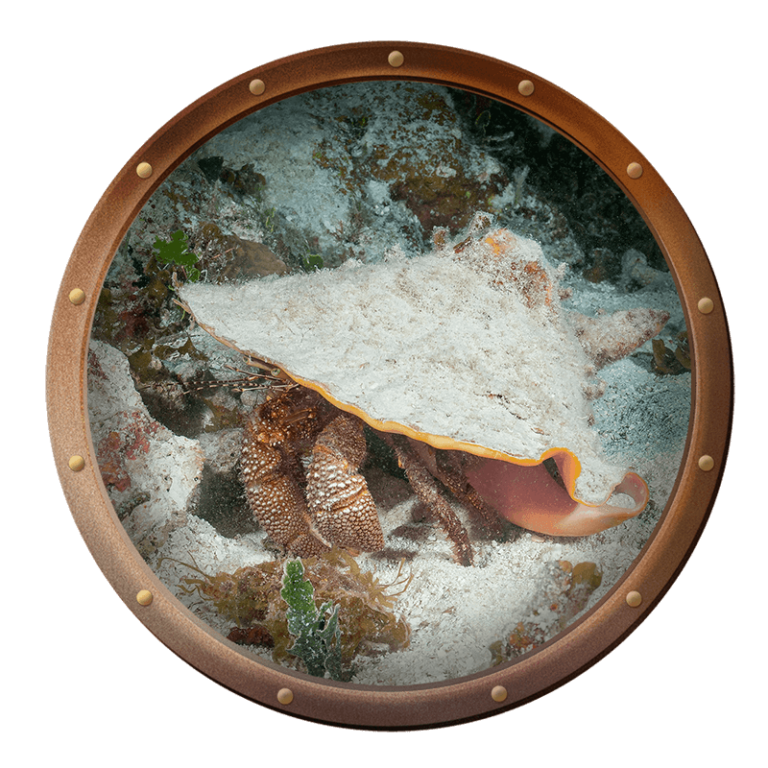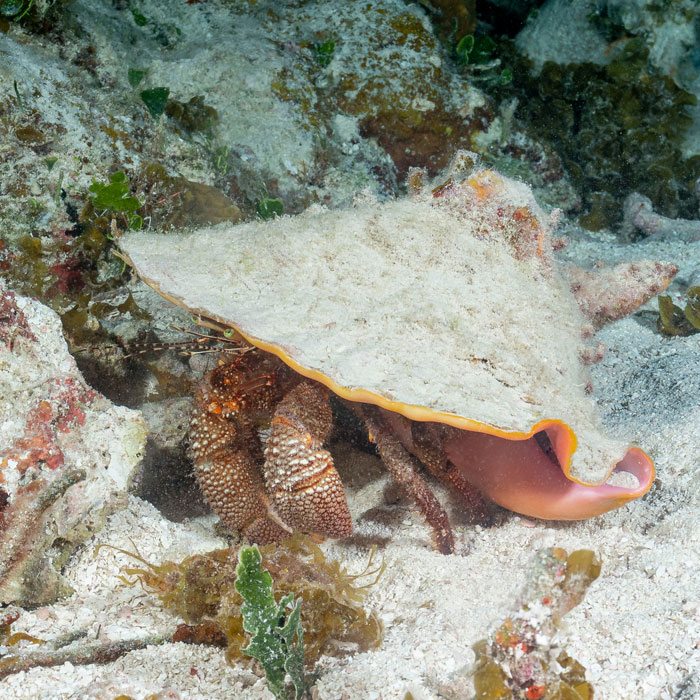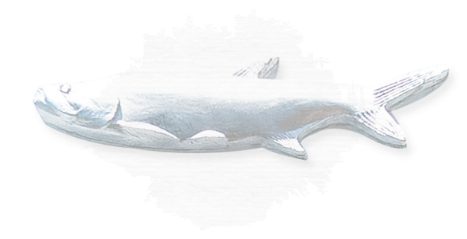OVER 800 SPECIES OF HERMIT CRABS WORLDWIDE
Most of these animals are marine, living underwater in the ocean, but some make their homes on land. You can see both land and marine hermit crabs in the Florida Keys, and meet a couple in person at the Key West Aquarium!
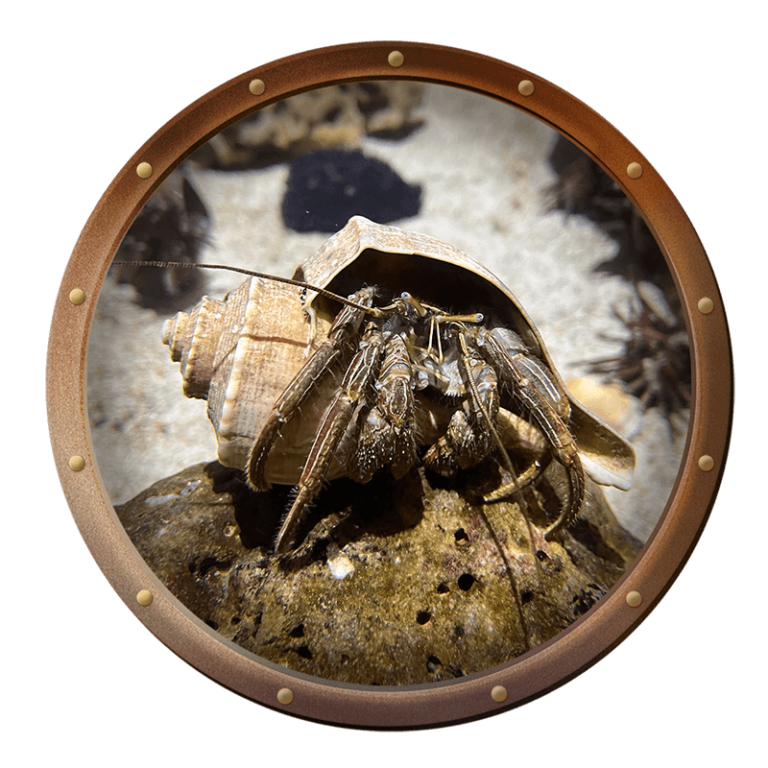
Despite the name, hermit crabs are not true crabs. They are more closely related to squat lobsters. They evolved from free-living ancestors about 150 million years ago that used discarded shells for protection. The first shells were from the now-extinct ammonite, then the snail shells we are familiar with today. Over time, the abdomen of hermit crabs lost its hard exoskeleton and became soft and spiraled. A flexible, muscular tail wraps around the inside spiral of the snail shell, keeping the hermit crab firmly attached to the shell and helping it pull itself inside to safety when threatened. The front of the hermit crab is still protected by a hard exoskeleton, which they must shed in order to grow.
HOW DO HERMIT CRABS GROW?
When hermit crabs grow, they need to find new snail shells to accommodate their larger size. A hermit crab without a shell is extremely vulnerable to predators, so they are always on the hunt for new real estate. This leads to fierce competition for shells and sometimes fights to the death. If a stronger hermit crab sees a shell that they want, they may kick the current occupant out.
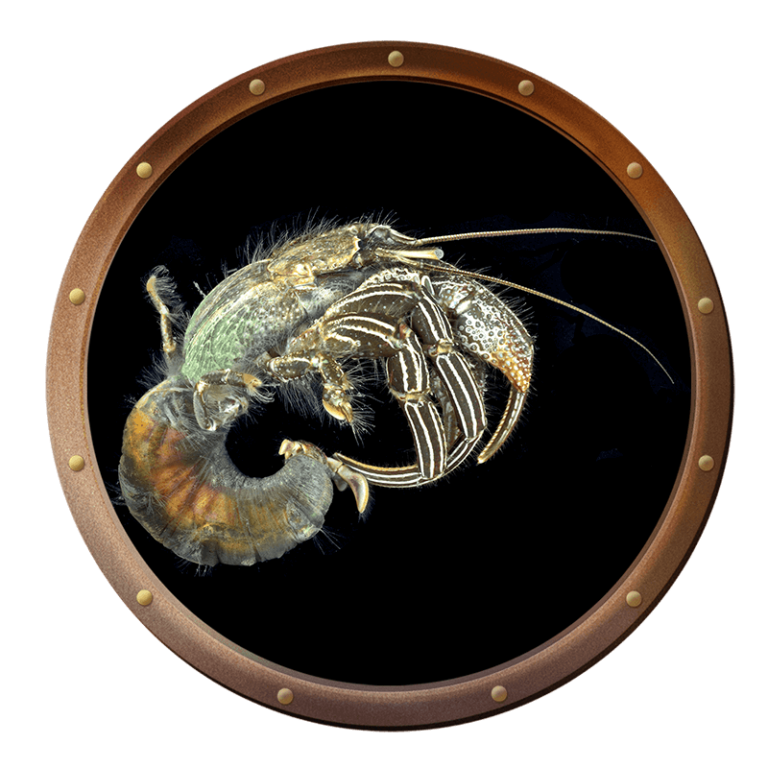
The smell of dead snails will lure hermit crabs hoping for a new shell. The shell has to be just the right fit for a hermit crab to take up residence, and they will sometimes try out a shell and then reject it for the old one. Buyer’s remorse can be costly though if another hermit crab sneaks into the free shell, possibly leaving the original resident homeless.

The constant quest for a better shell has led to an interesting prosocial behavior in hermit crabs called a “vacancy chain.” If a hermit crab comes upon a nice shell but it is too big for the discoverer, they will wait next to the shell until a larger hermit crab comes by that is the right size. This can lead to a chain of hermit crabs waiting in line from largest to smallest until the perfect-sized crab arrives to move into the new shell. This sets off a chain of shell swaps down the line.
If there is a shortage of suitable snail shells available, hermit crabs will use whatever they can find. It is not uncommon to see hermit crabs using bottle caps, plastic cups, or other objects as a home. This is one reason why it is always best to leave shells at the beach
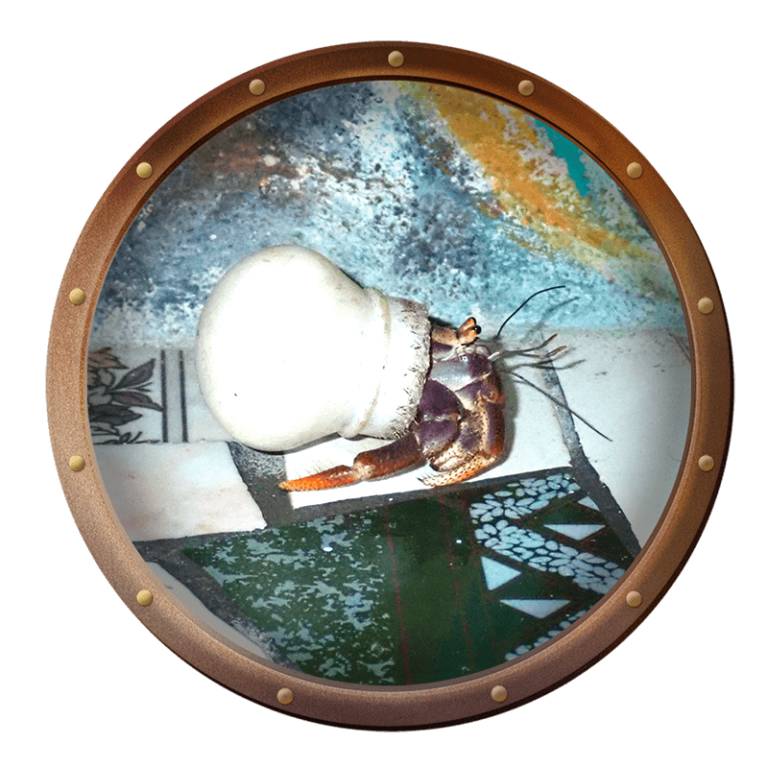
EVERYBODY WANTS TO BE A CRAB!
The tendency for non-crab organisms to evolve into crab-like forms is known as “carcinisation.” The “crab” body plan turns out to be very successful and has emerged several times in evolutionary history. The lobster-like ancestor of hermit crabs also gave rise to porcelain crabs. Porcelain crabs have their abdomen tucked under them, which gives them the appearance of a “true crab.” They use setae, feathery fan-like mouth parts, to filter food particles and plankton out of the water.
Porcelain crabs are often associated with other organisms, such as anemones, which they use for shelter. Several species can be found in the Florida Keys, but one of them, the spotted porcelain crab, Porcellana sayana, lives commensally with the giant hermit crab, Petrochirus diogenes. The small porcelain crabs live in the shell of the giant hermit crab, gaining shelter and a free meal. As the giant hermit crab feeds by sifting through the sand, it stirs up the bottom and causes small particles to become suspended. The porcelain crabs use their setae to catch food particles that flow past.
HOW BIG CAN HERMIT CRABS GET?
The close relationship between hermit crabs and snails has limited the evolutionary development of the group. They tend to be relatively small, with the giant hermit crab, Petrochirus diogenes, a notable exception. It lives up to its name, often using queen conch shells for shelter, and can reach 12 inches long. They are the largest species of marine hermit crab and a common sight in the Florida Keys.
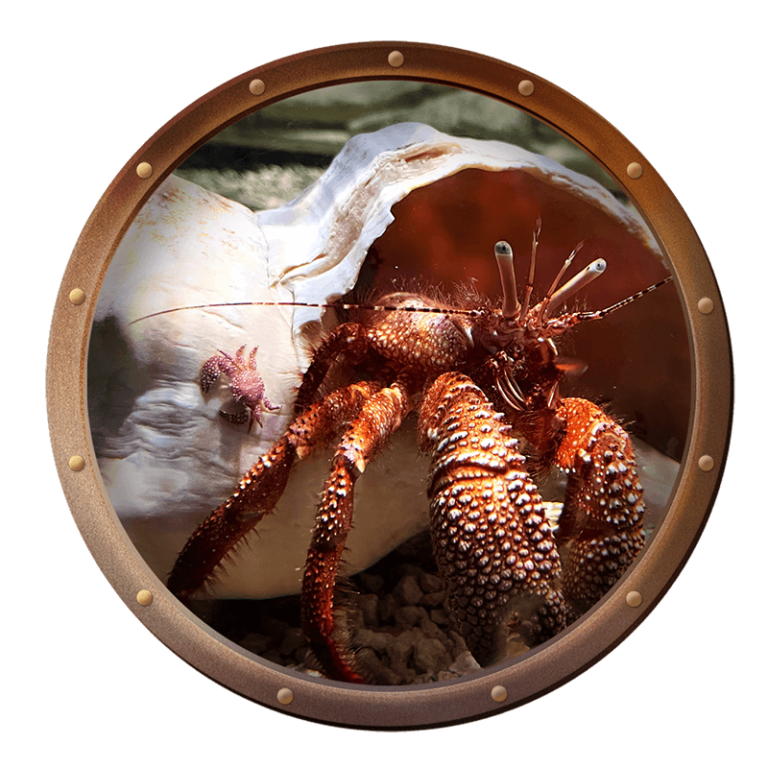
The title for largest hermit crab in the world, and largest arthropod in the world, goes to the coconut crab, Birgus latro, named for its ability to crush coconuts with its huge claws in order to feed on them. These hermit crabs live in snail shells when they are young but eventually will outgrow all available shells. They develop a hard skin over their soft abdomen once they get too large for a shell. Coconut crabs are collected as a food item, but they are vulnerable to overharvesting due to their slow growth rate and long life span. They can grow to be 40 inches long, weigh 10 lbs and live to be over 60 years old! These hermit crabs are native to the tropical Indo-Pacific oceanic islands and offshore islets, so you won’t run into them while in Key West.
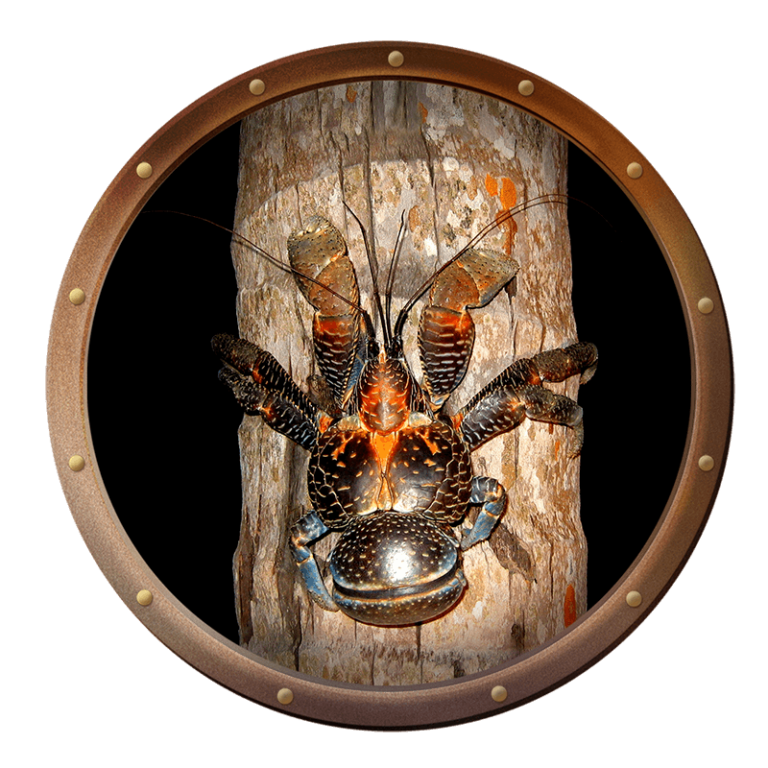
WHAT ARE THE MOST COMMON SPECIES OF HERMIT CRABS IN THE FLORIDA KEYS?
There are about nine species of hermit crabs that are native to Florida. You are likely to see Caribbean hermit crabs, Coenobita clypeatus, if you take a walk on the beach by the mangroves. This species is common and is often seen in the pet trade. As the name suggests, they live on land but still close to water. Terrestrial hermit crabs need to keep their gills wet in order to breathe and use the water to reproduce.
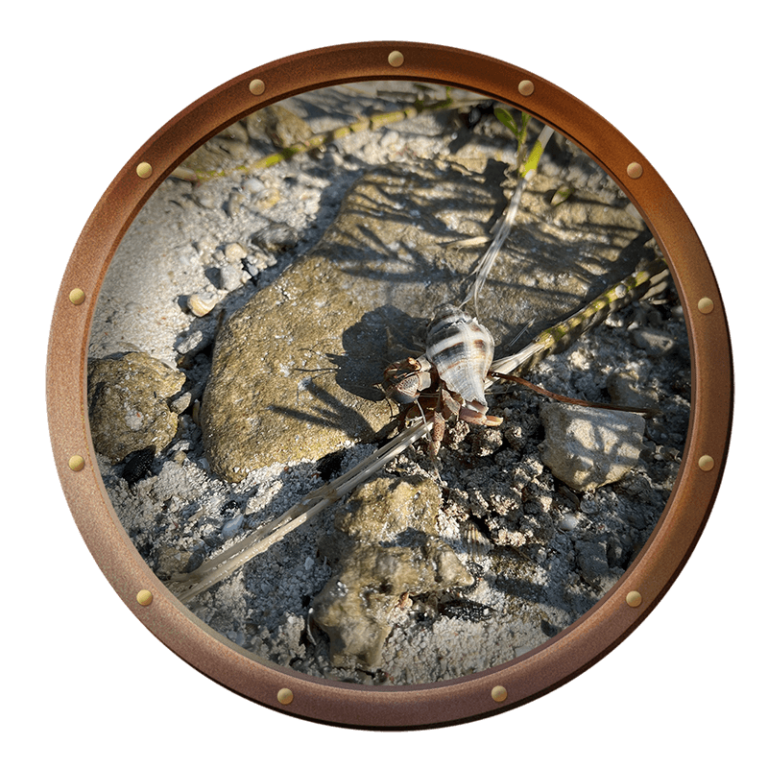
THINSTRIPE HERMIT CRAB
The thinstripe hermit crab, Clibanarius vittatus, is common in shallow water habitats and may even be seen on tidal flats. It can tolerate being out of the water fairly well, which allows it to take advantage of multiple habitats and makes it a common hermit crab for people to see. The distinct stripe going down the legs gives this hermit crab its name and makes it easy to recognize.
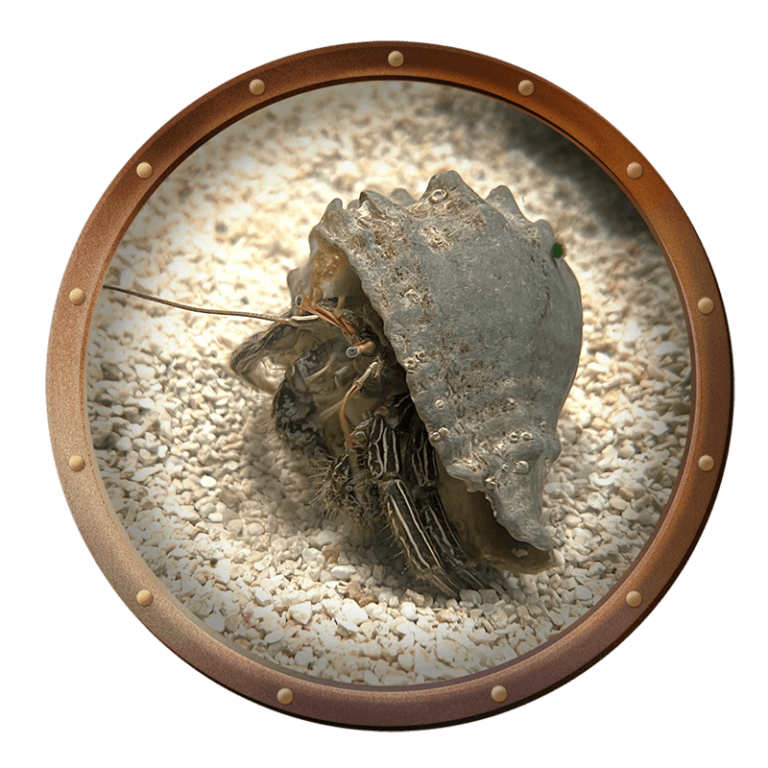
TRICOLOR HERMIT CRAB
The blue leg, or tricolor hermit crab, Clibanarius tricolor, has beautiful bright blue, orange and white legs. They can be found in rocky intertidal areas where they feed on a variety of algae and detritus. This makes them popular additions to home reef aquariums as members of the cleanup crew. Look closely in the reef tanks to find these small hermit crabs at the Key West Aquarium!
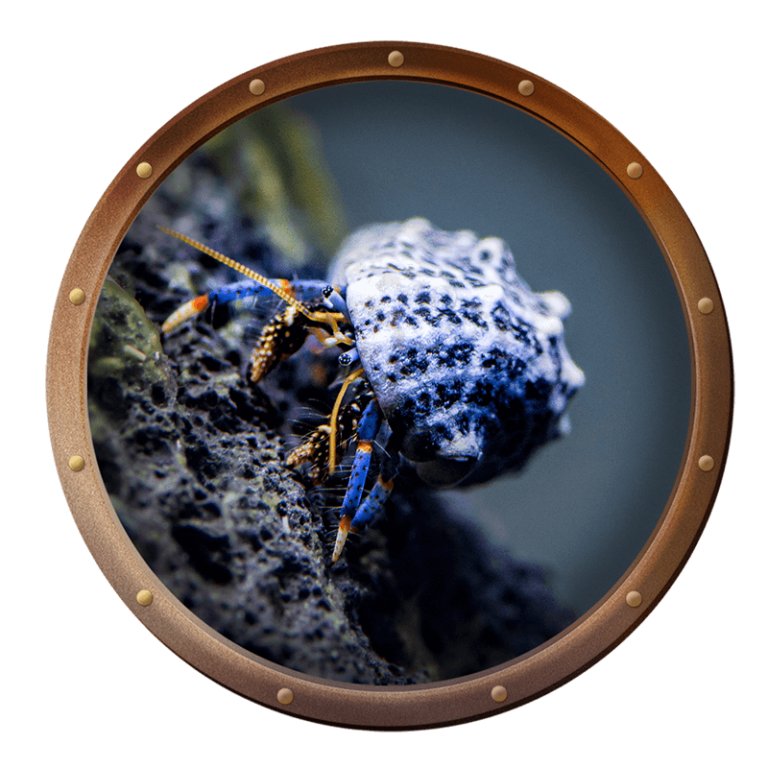
GIANT HERMIT CRAB
The giant hermit crab, Petrochirus diogenes, is the largest species of marine hermit crab. They are excellent sand sifters, using their large front claws to search for food. These crabs often make their homes in queen conch shells, which can be quite a surprise to curious people who pick up these shells.
